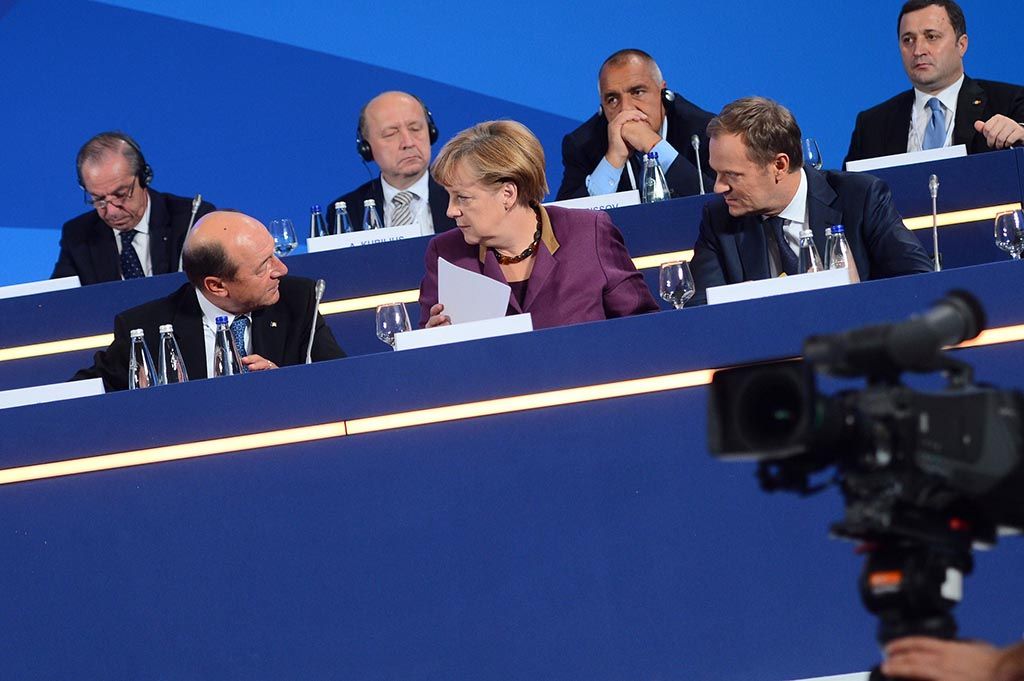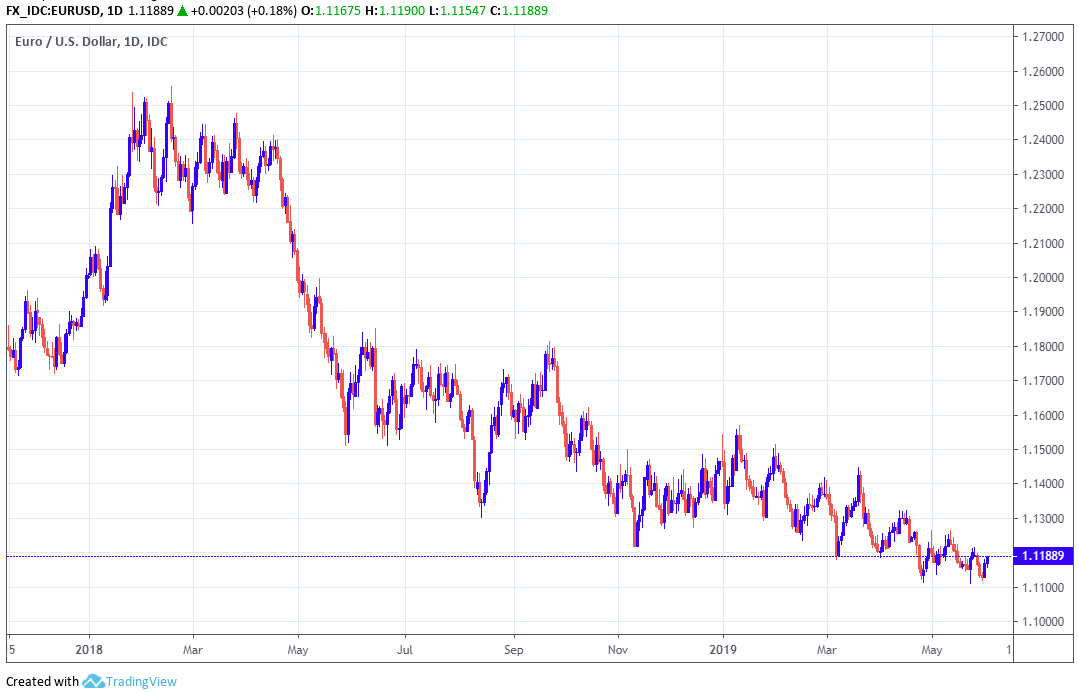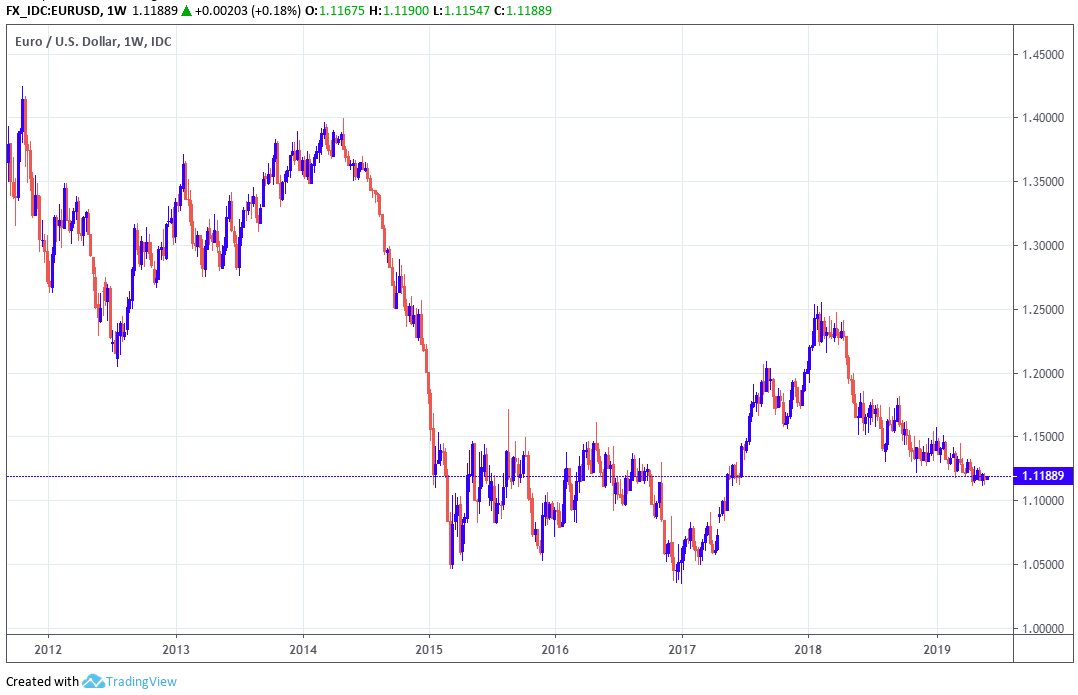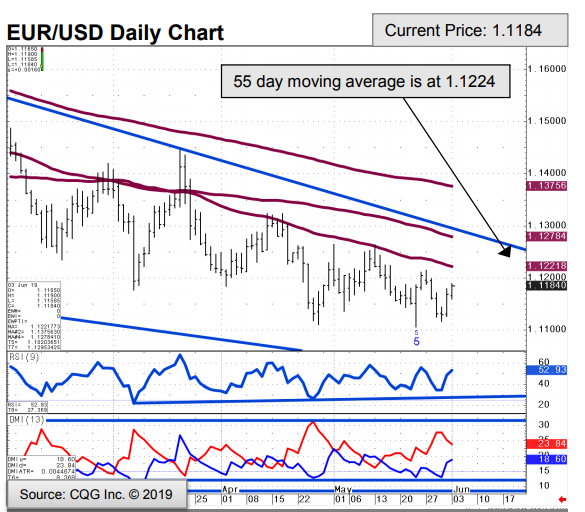Euro-Dollar: Germany's Creaking Two-party System Another Political Headache for Single Currency
- Written by: James Skinner

Image © European People's Party, Reproduced under CC licensing
- EUR bests softer USD Monday but odds still favour downtrend.
- Technical analsis puts lid on EUR as fundamentals augur losses.
- Political risk in Germany and Italy is now firmly back on the agenda.
The Euro advanced against a softer Dollar Monday but it still lacks the impetus to clear a key resistance level just above the current market and political risks facing the single currency are now escalating, which could keep the Euro-to-Dollar downtrend alive and well.
Europe's single currency has ceded ground to the Dollar in 2019 and with the U.S.-China trade war escalating in May, and now the North American Free Trade Agreement (USMCA) is on the verge of falling apart, the greenback is expected to remain strong and keep a lid on the EUR/USD rate.
European political risk is also now back on the market's radar, with fears for the stability of the German government rising, amid concerns about a renewed clash between the Italian government and European Commission.
"The deepening leadership crisis in Germany‘s centre-left SPD accentuates the risk that the party may walk out of the coalition with the centre-right CDU/CSU later this year. That would spell the premature end of Angela Merkel‘s reign as chancellor. We see a 40% probability of that," says Holger Schmieding, chief economist at Berenberg.
Andrea Nahles, the leader of the Social Democratic Party half of Germany's coalition government, resigned Sunday in response to the party's dire performance in two elections the previous week.
The looming SDP leadership election puts Germany's coalition government at risk because grassroots members of the party have been up in arms over the decision to enter another 'grand coalition' ever since 2017 federal election.
"Having surged to 20.5% of the vote in the European elections eight days ago from 8.9% in the last national vote in September 2017, the Greens should have a strong interest in new elections. That they may no longer need the Liberals as a third partner in a government with the CDU/CSU after new elections strengthens the argument," Schmieding adds.

Above: Euro-to-Dollar rate shown at daily intervals.
The SDP scooped just 15.5% of the national vote in the European parliament election last Sunday, down from more than 27% in 2014, and it then went on to lose its crown as the largest party in the state of Bremen.
Nahles' party fell to second place in Bremen, a state that it had held since the second world war, enabling Chancellor Angela Merkel's Christian Democratic Union to claim first place following the vote.
"Some of Ms Nahles’ most ardent critics want the SPD to abandon the coalition government as soon as possible," warns Lee Hardman, a currency analyst at MUFG. "The euro continues to trade close to recent lows against the US dollar at just above the 1.1100-level. Domestic fundamentals in euro-zone remain negative for the euro with risks skewed to the downside in the near-term."
Both of Germany's main parties received a pasting in the 2017 general election with Chancellor Merkel's CDU getting just 32.9%, a loss of 8% and its lowest share of the vote since 1949. The SDP lost 5% of the vote to win only 20.5%.
The Green Party and Alternative for Germany (AFD) both grew their share of the vote in 2017 as well as in last week's European parliament election, benefitting from a polarisation of politics that harks back to, but is not limited to, the government's 2014-2015 decisions on migration policy.
It's not clear what the result of a general election would so it's difficult for markets to gauge the likely policy shift that would come if one actually takes place. But Germany is not the only source of political risk for the Euro.
"We do not expect German political risk to drive the euro lower. We would place more emphasis on downside risks from Italian politics and another potential budget stand-off with the EU," says MUFG's Hardman. "The Italian newspapers are reporting today that Prime Minister Conte will present an ultimatum to the ruling coalition to speed up government action over addressing the EU’s budget concerns or face his resignation."
A landslide win for Italy's League party in the European election last week sent a clear signal to Italian deputy Prime Minister Matteo Salvini and, accordingly, financial market analysts have been warning the government could feel that it has a mandate for a renewed clash with the EU over its budget rules.

Above: Euro-to-Dollar rate shown at weekly intervals.
"The failure of the euro to respond to recent favourable yield spread dynamics could reflect in part a pick up in concerns over political risk in Europe," Hardman says."The yield spread between 10-year Italian and German government bonds has widened by around 35 basis points over the month, and is moving back towards the highs from late last year at over 3%."
The Euro, as well as the Italian bond market, weakened the last time the government and commission were at loggerheads over the former's spending plans. European Union rules give the commission significant influence and control over the budgets of deficit-running Eurozone countries.
And now, with the largest ever contingent of League European MPs heading to Brussels in the wake of election, an emboldened Matteo Salvini is expected to feel justified in flouting EU rules on spending and potentially about breaking a December 2018 agreement with the commission.
Ultimately, the European Commission can fine Italy if it fails to meet targets imposed through international treaties but this process takes a long time, but this wouldn't stop the market from selling an already-beleaguered Euro due fears about the sustainability of the bloc.
As a result, markets might be sensitive to any messages coming from the European Commission and Italian government over the coming weeks and months. In the meantime, inflation data for the month of May and the latest European Central Bank interest rate decision are in focus this week.
"The key drivers of EUR for the week are (a) May CPI (Tue); and (b) the ECB meeting (Thu). Neither is likely to support the currency as inflation should continue correcting lower while ECB is likely present details of itsTLTROpricing," says Petr Krpata, a strategist at ING Group.
Technical analysts say there's a range of obstacles standing between the Euro and higher levels on the charts, which must be overcome before investors are likely to show interest in the currency again.
"EUR/USD has spent the past month subdued by the 55 day moving average at 1.1222, it is on the defensive but equally appears to be reluctant to sustain a break below 1.1106. We need to overcome the 55 day moving average, the recent high at 1.1264 and the 2018-2019 downtrend at 1.1287 in order to alleviate downside pressure and reassert upside interest," says Karen Jones, head of technical analysis at Commerzbank.

Above: Commerzbank technical analysis of Euro-to-Dollar rate.
Time to move your money? Get 3-5% more currency than your bank would offer by using the services of foreign exchange specialists at RationalFX. A specialist broker can deliver you an exchange rate closer to the real market rate, thereby saving you substantial quantities of currency. Find out more here.
* Advertisement




